Covering the underside of cabinets is an important step in any kitchen renovation or upgrade project. Not only does it add a finishing touch to your cabinets, but it also provides additional protection against moisture and warping. By learning how to cover the underside of cabinets, you can transform the look of your kitchen while also extending the lifespan of your cabinetry.
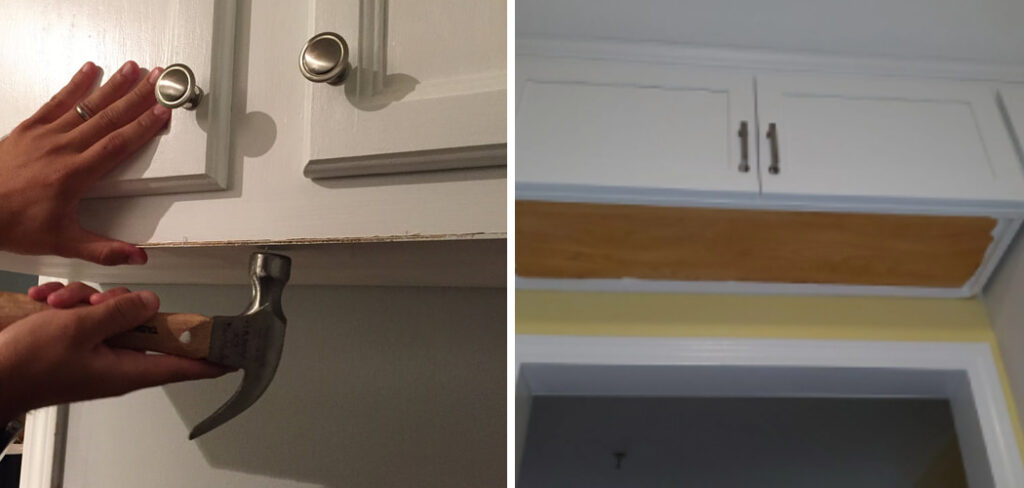
The main advantage of covering the underside of cabinets is that it protects against moisture and warping. Constant exposure to moisture can cause damage to your cabinets, leading to costly repairs or replacements. By covering the underside, you create a barrier between the cabinets and any potential water sources, such as leaks from plumbing or spills from countertops. In this blog post, You will learn in detail how to cover underside of cabinets.
Step-by-step Instructions for How to Cover Underside of Cabinets
Step 1: Inspect the Underside of the Cabinets
Take a good look at the underside of your cabinets to assess the condition. Check for any damages or stains that may need to be repaired before covering them up. To cover the underside of your cabinets, you will need some basic materials such as fabric, wallpaper, contact paper, or paint. You will also need tools like scissors, a measuring tape, a pencil, and adhesive.
Step 2: Measure the Area
Using a measuring tape, measure the length and width of the underside of your cabinets. This will give you an accurate measurement for the material you will need. Based on your measurements, cut the fabric, wallpaper, or contact paper to fit the size of your cabinets. Leave a few extra inches on each side to ensure proper coverage.
Step 3: Prepare Adhesive
Depending on the material you are using, prepare an adhesive according to the instructions provided. This could be as simple as mixing water and glue or using a spray adhesive. Using a paintbrush or roller, apply the adhesive to the back of your material. Make sure to cover the edges and corners thoroughly.
Step 4: Carefully Place Material
Carefully place your chosen material onto the underside of your cabinets, starting from one end and smoothing it out as you go along. Make sure there are no air bubbles or wrinkles. Once the material is in place, use a pair of scissors to trim off any excess material that may be hanging over the edges of your cabinets.
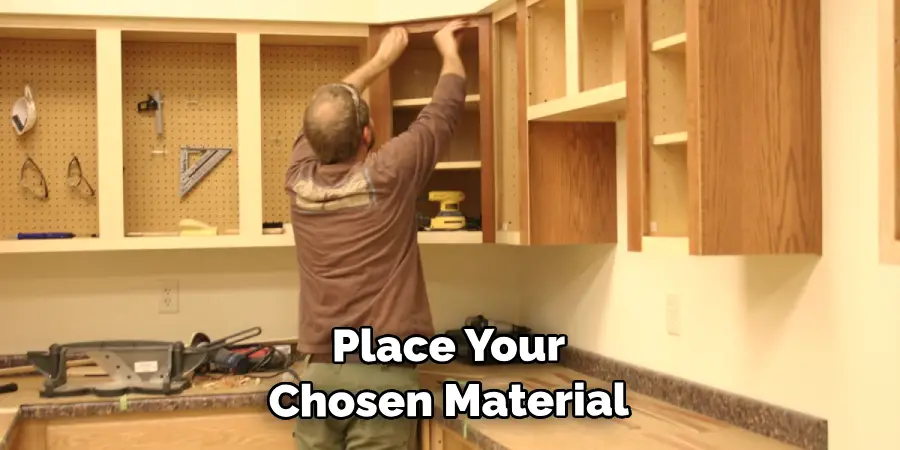
Step 5: Repeat Process for Each Cabinet
Follow steps 4-8 for each cabinet you wish to cover. It’s important to keep the same direction and pattern for a cohesive look. Allow the adhesive to dry completely before moving on to the next step. This could take anywhere from 24-48 hours, depending on the type of adhesive used.
Step 6: Add Finishing Touches (Optional)
If you want to add an extra touch, consider painting the edges of your cabinets to match the new underside covering. This will create a clean and polished look. Once everything is dry, step back and admire your newly covered underside cabinets. They will add a pop of color or texture to your space while also protecting the surface from wear and tear.
Now that you know how to cover the underside of your cabinets, you can get creative and try different materials and patterns to achieve the desired look. Remember to take your time and follow the steps carefully for a professional-looking finish.
Safety Tips for How to Cover Underside of Cabinets
- When working with tools or chemicals, always remember to wear suitable protective gear such as goggles, gloves, and a mask. This will protect you from any potential injuries or harmful fumes.
- Before starting any project, make sure to read and understand the instructions provided by the manufacturer. Following directions will ensure that you are using the product correctly and safely.
- When using hot glue guns or other heat sources, be mindful of your surroundings. Keep flammable materials away from the work area to prevent potential hazards.
- Ensure that there is proper ventilation in the work area. This will help to minimize exposure to any chemicals or fumes that may be released during the covering process.
- When using power tools, always unplug them when not in use and store them safely. Avoid leaving them unattended where they can easily be accessed by children or pets.
- Properly dispose of any debris or waste materials after completing the project. This includes chemicals, adhesives, and any leftover materials.
- In case of an emergency or injury, always have a first aid kit nearby and know how to use it. If the injury is severe, seek medical attention immediately. Safety should always be your top priority when covering the underside of cabinets.
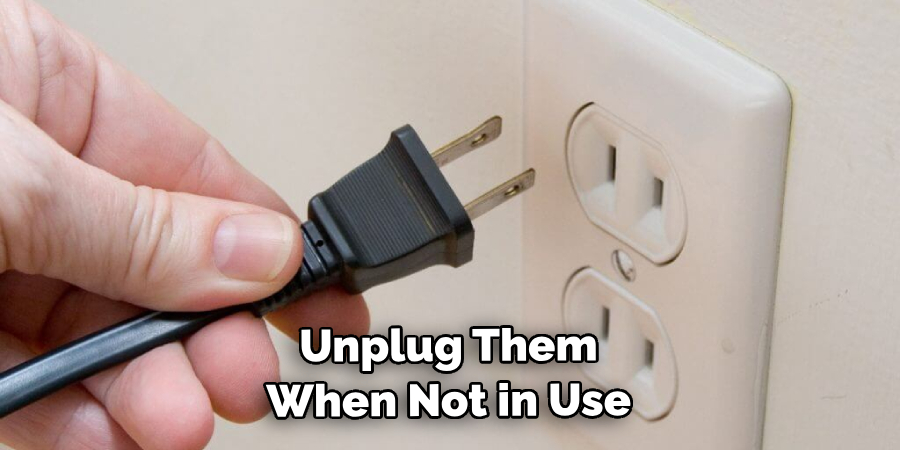
Common Mistakes to Avoid When Covering the Underside of Cabinets
When it comes to covering the underside of cabinets, there are a few common mistakes that people make. Knowing these mistakes can help ensure that your project goes smoothly and avoid costly errors.
1. Not Measuring Properly
One of the most important steps when covering the underside of cabinets is taking accurate measurements. This will ensure that you have enough material and that it fits properly.
2. Using the Wrong Material
Another mistake is using an unsuitable material for covering the underside of cabinets. For example, using wallpaper or contact paper may not hold up well in a high-traffic area like a kitchen.
3. Not Preparing the Surface Properly
It’s essential to clean and sand the surface before applying any type of covering. This will help ensure that the material adheres properly and lasts longer.
4. Rushing Through the Project
Covering the underside of cabinets can be a time-consuming task, but it’s important not to rush through it. Take your time and follow each step carefully for a professional-looking finish.
5. Forgetting to Prime or Seal the Material
Depending on the type of covering you use, you may need to prime or seal it before applying. This step helps protect the material and ensures a smoother application.
6. Not Allowing for Ventilation
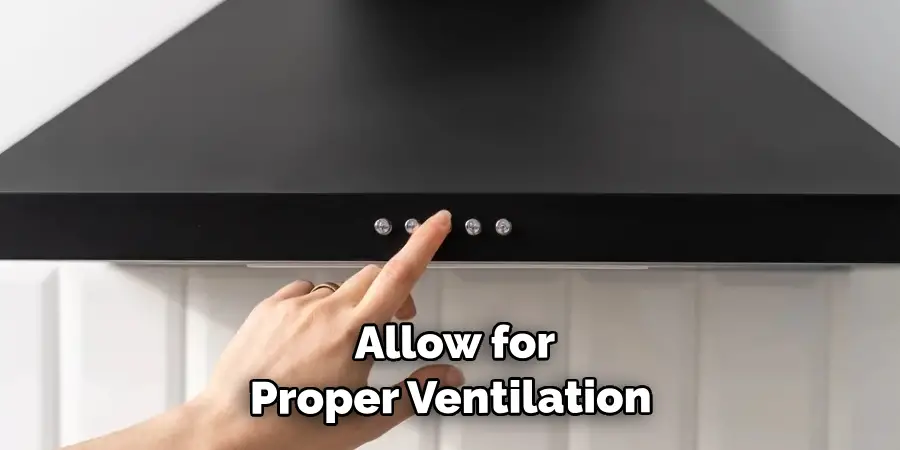
If you’re using adhesive materials, make sure to allow for proper ventilation during and after installation. This will help prevent any strong odors from building up in your kitchen, especially if you have limited airflow.
7. Ignoring Safety Precautions
Lastly, it’s crucial to follow safety precautions when covering the underside of cabinets. Use proper tools and materials, wear protective gear, and work in a well-ventilated area to avoid any accidents or health hazards.
By avoiding these common mistakes, you can successfully cover the underside of your cabinets and achieve a professional-looking finish.
How Can You Clean and Maintain the Coverings?
One of the most important aspects of covering the underside of cabinets is proper cleaning and maintenance. This not only keeps your cabinets looking their best, but it also helps to extend their lifespan. Here are some tips on how to clean and maintain your cabinet coverings.
1. Regular Dusting
Dust can quickly accumulate on the surface of your cabinet coverings, so it’s important to regularly dust them using a soft cloth or feather duster. This will prevent the build-up of dirt and grime, and also help to maintain the shine of your coverings.
2. Wipe Down with Soap and Water
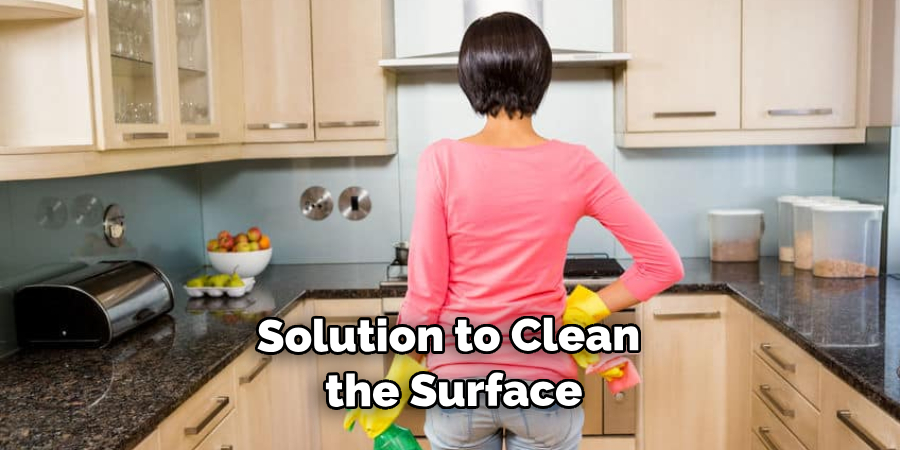
For tougher stains on your cabinet coverings, use a mild soap and water solution to clean the surface. Make sure to wring out the cloth well before wiping down to avoid excess moisture seeping in between the cracks and damaging the covering.
3. Avoid Harsh Chemicals
When cleaning your cabinet coverings, it’s important to avoid using harsh chemicals or abrasive cleaners. These can damage the surface and cause discoloration or scratches. Stick to mild soap and water or gentle all-purpose cleaners.
4. Check for Wear and Tear
Regularly inspect your cabinet coverings for signs of wear and tear. If you notice any scratches or peeling, it’s important to address them immediately before they worsen. You can use touch-up kits specifically designed for cabinet coverings to repair minor imperfections.
5. Use Protective Mats
To prevent damage from hot pots and dishes, it’s a good idea to use protective mats or trivets on your cabinet coverings. This will also help to prevent scratches and dents from heavy objects.
6. Avoid Excessive Moisture:
Cabinet coverings are not designed to withstand excessive moisture, so make sure to avoid getting them too wet while cleaning. Wipe up any spills immediately and avoid using excess water when cleaning.
7. Handle with Care
When moving objects around on your cabinet coverings, make sure to handle them with care. Dragging or dropping heavy objects can cause scratches and dents, so it’s important to be gentle.
Overall, maintaining the cleanliness and integrity of your cabinet coverings is essential for their longevity. By following these simple tips, you can ensure that your cabinet coverings stay in top condition for years to come.
Are There Any Environmental Considerations When Choosing Materials for Covering the Underside of Cabinets?
When it comes to covering the underside of cabinets, there are many materials to choose from such as wood, laminate, and tile. However, in addition to considering aesthetics and durability, it is also important to think about potential environmental impacts.
One major consideration when choosing materials for cabinet undersides is indoor air quality. Some materials may emit harmful chemicals or volatile organic compounds (VOCs) into the air, which can negatively impact the health of those living in the space.
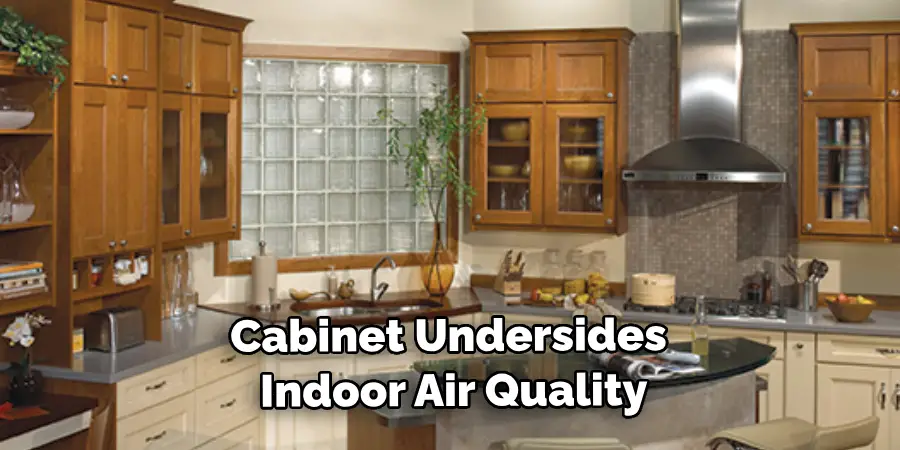
This is especially important to consider if you have young children or family members with respiratory issues. To ensure good indoor air quality, it is recommended to choose materials that are low or zero-VOC and have been certified by independent organizations such as Green guard or Floor Score. These certifications indicate that the materials have been tested and found to have low emissions of harmful chemicals. Another environmental factor to consider is sustainability.
Some materials, such as wood, can be sustainably sourced while others may contribute to deforestation or other negative environmental impacts. Look for materials that are responsibly harvested and/or have a high percentage of recycled content.
Conclusion
In conclusion, the underside of cabinets can be easily covered with different materials and methods, all depending on personal preference and budget. From using contact paper to repurposing fabric, there are various ways to give your cabinets a fresh look from below. One important tip to keep in mind is to properly clean and prepare the surface before applying any type of cover. This will ensure better adherence and longevity of the covering material.
Overall, covering the underside of cabinets can add a touch of style and personality to your living space without breaking the bank. With a little creativity and effort, you can transform this often overlooked area into a statement piece in your home. I hope this article has been beneficial for learning how to cover underside of cabinets. Make Sure the precautionary measures are followed chronologically.
Professional Focus
Angela Ervin, a former interior designer turned blogger, specializes in kitchen design and renovations. Through her website, she blends her passion for cooking with design expertise, sharing practical and creative ideas. Known for balancing functionality and beauty, Angela’s insightful content has made her a trusted voice in home design and lifestyle.
About the Author
Angela Ervin, an experienced interior designer and blogger, combines her passion for kitchen renovations with storytelling. Living in Petersburg with her family, she enjoys cooking and testing her projects firsthand. Known for her humor and relatable style, Angela shares creative, functional design insights through her content, making her a trusted voice in home design.
Education History
University: Virginia Commonwealth University
Degree: Bachelor of Fine Arts (BFA) in Interior Design
- Angela’s education at VCU focused on mastering core interior design principles, including spatial planning, color theory, materials selection, and sustainable design practices.
- She gained hands-on experience through studio projects and collaborative design exercises, which honed her ability to create functional and aesthetically pleasing environments.
- Her coursework also emphasized problem-solving and practical applications of design, preparing her for real-world projects like her self-directed kitchen renovations.
- The program’s strong foundation in both technical skills and creative expression shaped Angela’s ability to seamlessly integrate form and function in her work.


